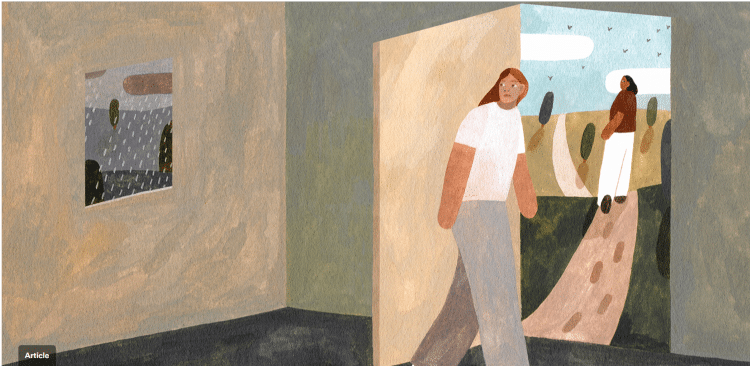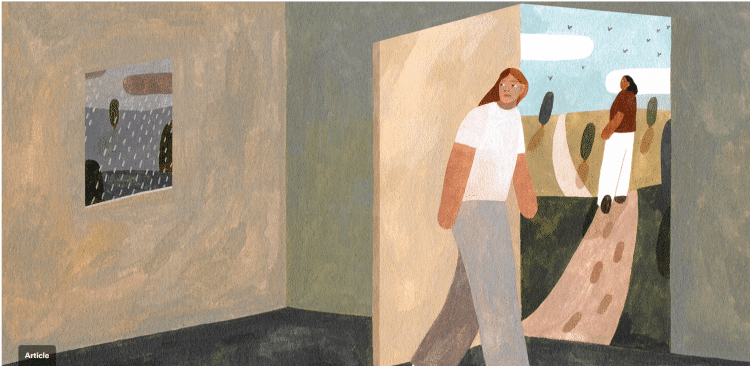How one ER partnered with a mental-health organization to care for youth in distress
Article

This article was written in partnership with Healthy Debate, and is part of a series of seven articles that explore the relationship between technology and compassion in the field of health care today, and especially during the COVID-19 pandemic.
In recent years, more and more young adults have been coming into the emergency room of Mount Sinai Hospital, in downtown Toronto. Bjug Borgundvaag, a 26-year veteran of the ER and director of the Schwartz/Reisman Emergency Medicine Institute, has seen a lot: twentysomethings going through breakups who are contemplating suicide; other young adults who have self-harmed; students from nearby universities who self-medicate with alcohol or drugs; young people convinced they’re having heart attacks, when they’re really having panic attacks. Youths experiencing these kinds of problems aren’t just showing up in greater numbers in the ER of Mount Sinai: from 2006 to 2018, there was a 75 per cent increase in youths aged 10 to 24 going to ERs across Canada because of crises related to their mental health. But the ER can only do so much, Borgundvaag says. “The way the whole system is set up is not designed to respond to those kinds of urgent problems.”
ERs have traditionally focused on stabilizing or resuscitating patients suffering from life-threatening medical emergencies like cardiac arrest, Borgundvaag explains. They were not intended to address the complex psychological distress of young adults grappling with painful life transitions and emerging mental illnesses. So when they do come in to the ER, they often leave disappointed: when assessing such patients, the overriding concern of busy emergency doctors and nurses is ensuring their lives are not in danger – for example, because they are suicidal or overdosing, he says. For the rest, “there wasn’t really a lot that we could do other than provide brief counselling and a list of phone numbers for mental health organizations” before moving on to the many other patients, says Christine Bradshaw, a social worker in the ER. Referrals to psychiatrists can take many months, Borgundvaag notes. Receiving this sort of quick, to-the-point care after a long wait before being redirected elsewhere can demoralize patients, leading them to lose faith in the health-care system, he says. But connecting these patients to the care they need in that moment is critical: “These are life-altering illnesses that are profoundly important for that person and for society overall,” Borgundvaag says. “And up until now, our response has been, frankly, lacking compassion.”
This disconnect gave Borgundvaag an unconventional idea: partnering the ER with a community organization focused on youth mental health to “expand the kind of care that that we could give,” he says. Eventually, the emergency department partnered with Stella’s Place, which provides programs and services to youth between 16 and 29 who are struggling with their mental health or substance use. In May 2020, the emergency department and Stella’s Place launched Pathway to Peers, a program in which “peer-support workers,” young adults in recovery, work full-time in the ER alongside doctors, nurses and, in particular, social workers. The program is effectively experimenting with the idea that first-hand knowledge of what it’s like to struggle with mental illness and substance use – and what it takes to recover – is a critical complement to the clinical expertise of the ER team. For Allison Dunning, the manager of peer-related initiatives at Stella’s Place, “It just makes so much sense when there’s one person dedicated to supporting the emotional, human aspects of going through these experiences, and other team members, like nurses, doctors, who are focused on addressing the medical-related concerns.”
When peer-support workers open up about their pasts to patients going through similar tribulations now, they establish a relationship that can be life-changing for the patient, says Yolanda Delmonte, a peer-support worker. A large part of what makes talking about the similarities in their life stories so powerful is that it shows patients that they are not alone, no matter how isolated or stigmatized they feel. “Being able to tell somebody I’ve gone through it makes them feel less disconnected from other people,” Delmonte says. “I can see almost like a pleasant shock on their faces … their walls come down a little bit more.
The patients are not the only ones who benefit. “Helping other people feel like they’re not alone, it’s helping me feel like I’m not alone,” Delmonte says. “It helps me along my own recovery journey.”
This connection can prompt patients to talk more openly about their situation, which can give the peer-support worker information that is important to getting the patients the care they need. Additionally, patients who hear from someone who has made it through hardships that are similar to their own can reassure the patients that their own issues are not as overwhelming or scary as they thought. The peer-support worker embodies the better future they could have.
The hope this inspires sometimes leads patients to ask Delmonte about how she started recovering: What steps did she take to change her life? What organizations and resources can she vouch for? “Then we can brainstorm things that might work for them,” she says. This personalized help does not always end when patients leave the ER. Peer-support workers sometimes follow up with patients, asking how they are faring and whether they need more support. Because the peer-support workers are trained by Stella’s Place, they refer patients to the organization, which offers ongoing peer support. “We find that that’s a relatively easy, comfortable way for folks to navigate support following hospitalization,” says Dunning.
Since the peer-support workers take this sort of collaborative approach to helping patients, the program “instills empowerment,” says Bradshaw, the social worker and manager of Pathway to Peers. Though peer-support workers offer emotional support and insights from their own experiences, they do not recommend any particular course of action. Patients make their own decisions about how to get well, which in turn makes their recoveries more self-directed. Peer-support workers are not so much guides on the road to recovery, says Dunning, as they are seasoned fellow travellers whom patients can walk alongside. The transformative nature of this special relationship, Bradshaw says, is a testament to the power of “the simple act of empathy and compassion in a traumatic experience.”

